Overview
Navigating the Dependency and Indemnity Compensation (DIC) benefits application process can feel overwhelming. We understand that many may struggle with the complexities involved. That's why it's essential to focus on proper documentation and a clear understanding of eligibility requirements.
To enhance your chances of success, consider these supportive steps:
- Gather the necessary documents
- Complete the correct forms
- Utilize technology
Organizations like Turnout can significantly streamline the process, making it easier for you to achieve approval.
Remember, you are not alone in this journey. We're here to help you every step of the way. By taking these proactive measures, you can feel more confident as you navigate the application process.
Introduction
Navigating the intricacies of Dependency Indemnity Compensation (DIC) benefits can feel overwhelming for survivors of veterans. We understand that this journey can be daunting, especially with an estimated 1.5 million individuals potentially eligible for these benefits by 2025. It's crucial to grasp the application process to ensure you receive the support you deserve.
This article presents ten essential tips designed to simplify your journey. From gathering necessary documentation to avoiding common pitfalls, we aim to provide you with the guidance you need. However, it's common to feel lost at times. How can you ensure your claims are processed efficiently? We're here to help you navigate this path with confidence.
Turnout: Streamlining DIC Benefits Application for Survivors
Turnout understands the challenges of navigating the DIC benefits claims process. We recognize that for those affected, this journey can be overwhelming. Our advanced AI technology simplifies this process, ensuring that applicants receive timely updates and support every step of the way. This innovative approach significantly reduces the pressure often associated with traditional application methods, allowing survivors to access DIC benefits they deserve with greater ease.
Alongside our AI capabilities, Turnout employs skilled non-legal advocates who guide clients through the complexities of DIC benefits and government applications. This support is invaluable, offering expert assistance without the need for legal representation, making the process more approachable. Our technology not only enhances the user experience but also positively influences application processing times. For instance, applications submitted with expert help average around 128.5 days, while those submitted independently online take about 136 days. This demonstrates the effectiveness technology can bring to the process. Moreover, recent initiatives from the VA, such as the Digital Compensation Claims Tool, aim to expedite processing, with some applications being completed in mere minutes instead of months.
The positive impact of technology on DIC benefits is evident through the VA's ongoing efforts to automate processing. By implementing automated systems, the VA has significantly reduced processing times, targeting under 125 days for claims decisions. This shift towards a more digital and user-friendly experience reflects a broader commitment to enhancing the navigation process for veterans and their families. As Andrea Schneider, Product Lead of Digital Services at Veterans Affairs, mentioned, veterans have expressed that these personal touches make them feel cared for and not just another applicant, underscoring the importance of support throughout the application journey.
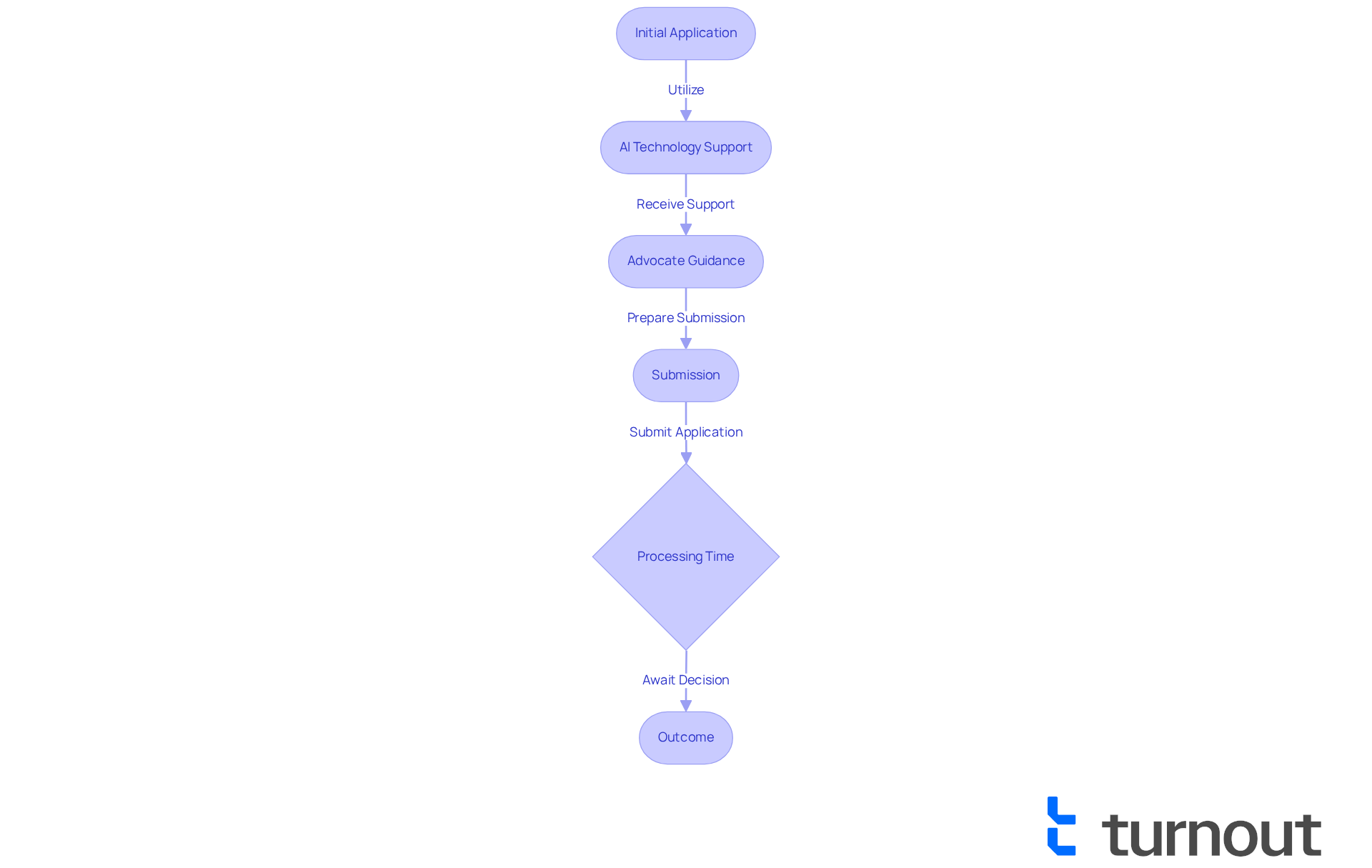
Eligibility Requirements for Dependency Indemnity Compensation (DIC)
Navigating the world of DIC benefits can feel overwhelming, especially for those who have lost a loved one in service. To qualify, it’s essential to meet specific criteria: you must be the spouse, child, or parent of a service member who died in the line of duty or from a service-related injury or illness. Understanding these requirements is crucial in your journey.
As we look ahead to 2025, it’s estimated that around 1.5 million survivors, including living spouses, children, and financially dependent parents, may qualify for DIC benefits. This highlights the importance of knowing the criteria during the application process. Successful claims often hinge on clear documentation of your relationship to the deceased and the service member's status at the time of death. For example, providing evidence of a service-connected disability or a total disability rating prior to the service member's passing can significantly enhance your chances of approval.
If you are a parent, it’s important to demonstrate financial reliance on the veteran to qualify for DIC assistance. Surviving spouses should also be aware that remarriage may affect their eligibility. We understand that these nuances can be confusing, but comprehending them is essential for anyone aiming to obtain DIC benefits. Remember, you are not alone in this journey, and we’re here to help you every step of the way.
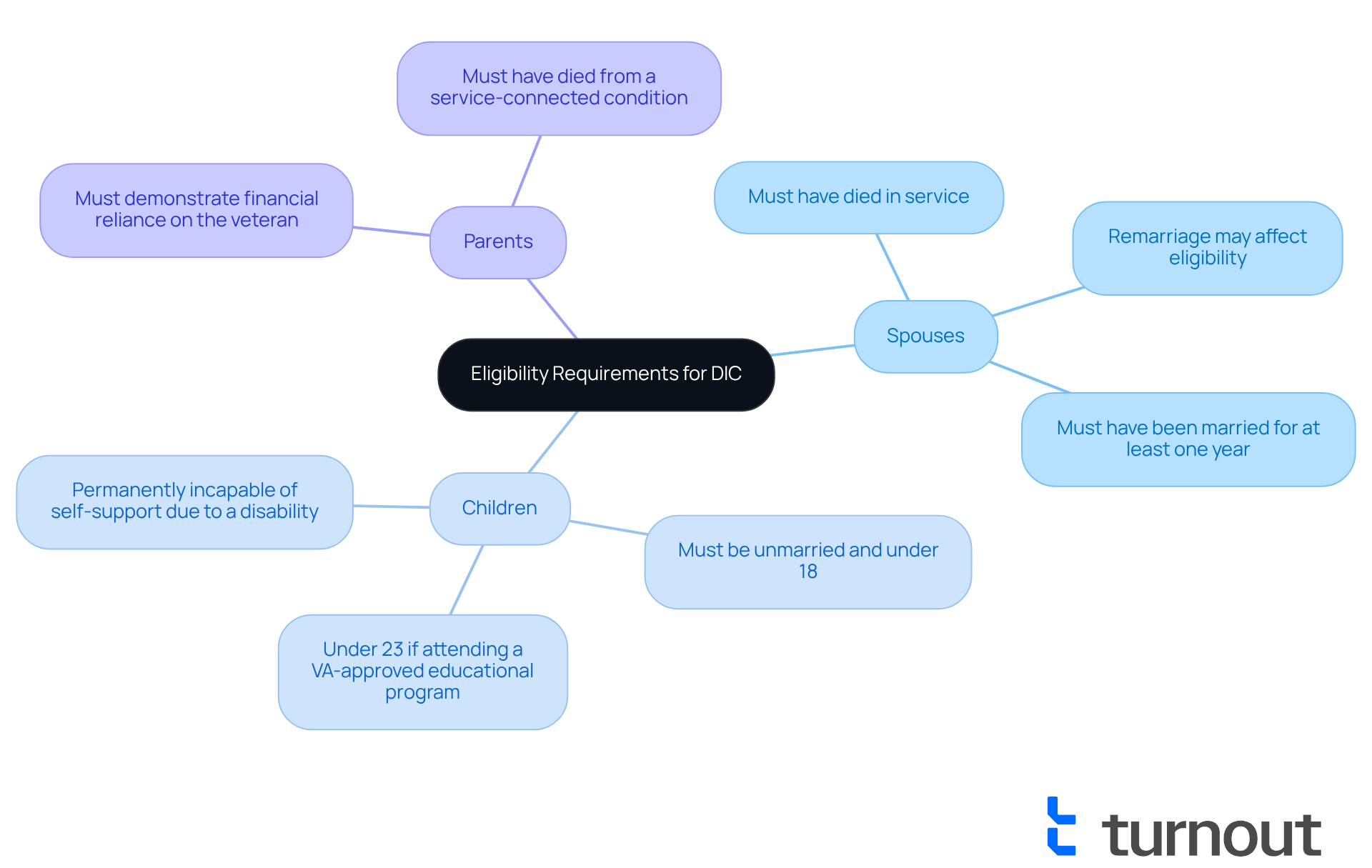
Necessary Documentation for DIC Claims
The process of applying for DIC benefits can feel overwhelming. We understand that gathering the right documents is a crucial step in this process. Survivors need to compile essential paperwork, including:
- The service member's death certificate
- Proof of relationship—such as marriage or birth certificates
- Relevant military service records
- Medical records supporting the claim of a service-related death
By organizing these documents in advance, you can significantly ease the application process.
It's common to encounter challenges with documentation. Statistics indicate that mistakes can lead to delays and rejections in requests for DIC benefits. Recent evaluations show an error rate of 24% in processing these requests, which underscores the importance of thorough preparation. Typically, VA disability applications take about 103 days to process, making prompt and complete documentation vital. Many successful requests for DIC benefits hinge on having all necessary paperwork in order. As Adam Werner wisely noted, "Gathering evidence like medical records can speed up the process and improve chances of success."
By prioritizing the collection of all required documents, you can enhance your chances of a smooth and efficient claims experience. Remember, you are not alone in this journey; we’re here to help you every step of the way.
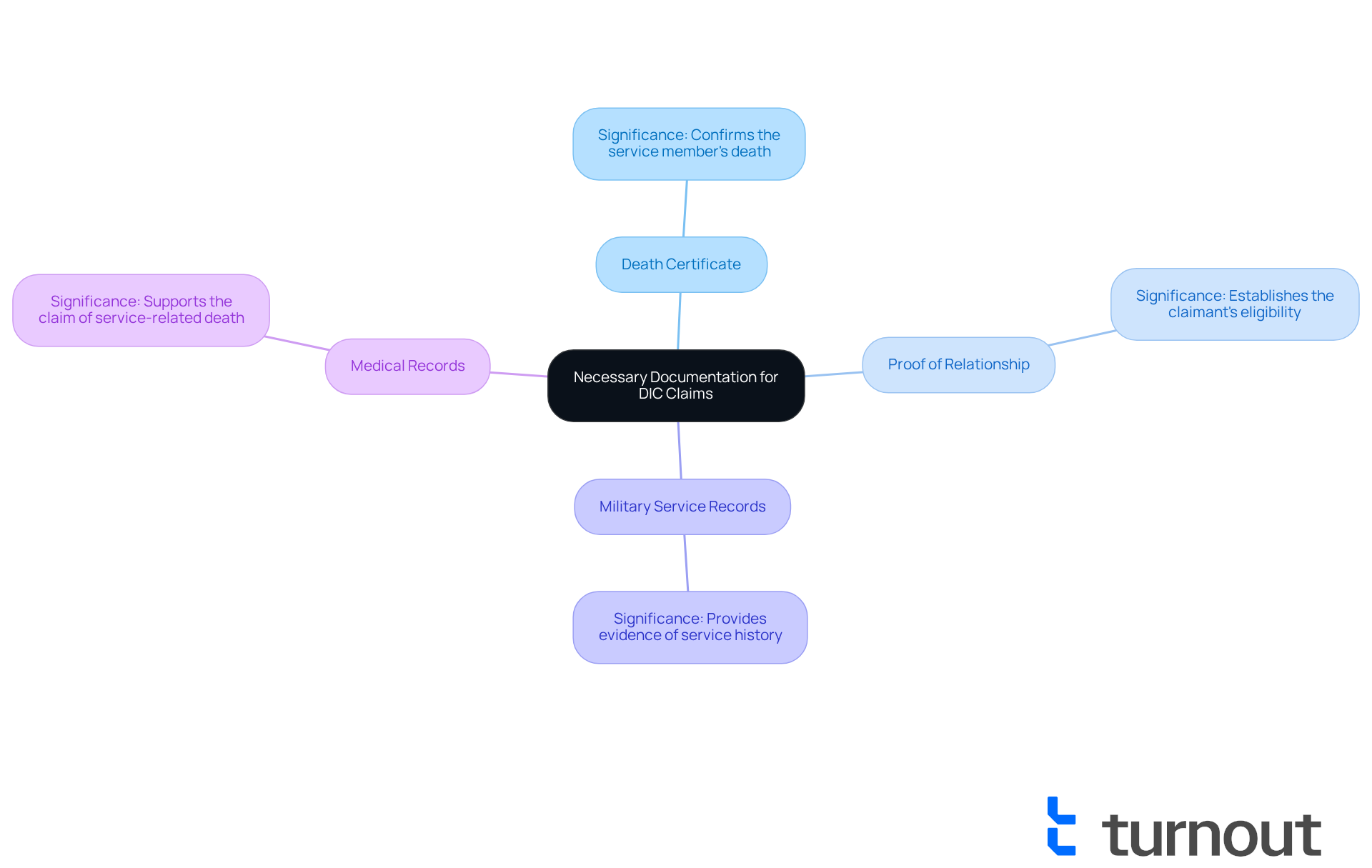
Types of DIC Benefits Available to Survivors
Survivors of veterans may qualify for a range of DIC benefits, including monthly compensation payments, educational assistance, and health care services. As of 2025, the monthly compensation for surviving spouses starts at $1,653.06, reflecting a 2.5% increase from the previous year. This amount can vary based on individual circumstances, such as the number of dependents and specific eligibility criteria.
For instance, surviving spouses with dependent children under 18 may receive additional compensation, enhancing their financial stability. Furthermore, children who are single and aged 18 to 23, while enrolled in school, are also qualified for DIC assistance, ensuring that younger dependents obtain essential support.
We understand that navigating these compensation options can be overwhelming. Comprehending the available DIC benefits is essential for those affected as they manage their financial planning. Remember, the DIC benefits are tax-free and can significantly alleviate the financial strain after the loss of a veteran. Additionally, individuals may qualify for educational assistance, which can help them pursue further education or vocational training, thereby enhancing their long-term financial prospects.
Turnout is committed to making access to these government advantages and financial assistance easier. We provide tools and services aimed at assisting individuals in navigating the complexities of DIC claims. This includes guidance on the requirement to submit VA Form 21P-534EZ and necessary documentation for claims. By being knowledgeable about the different DIC benefits available, you can make strategic choices regarding your applications and future planning. Remember, you are not alone in this journey; we’re here to help you secure a more stable financial future.
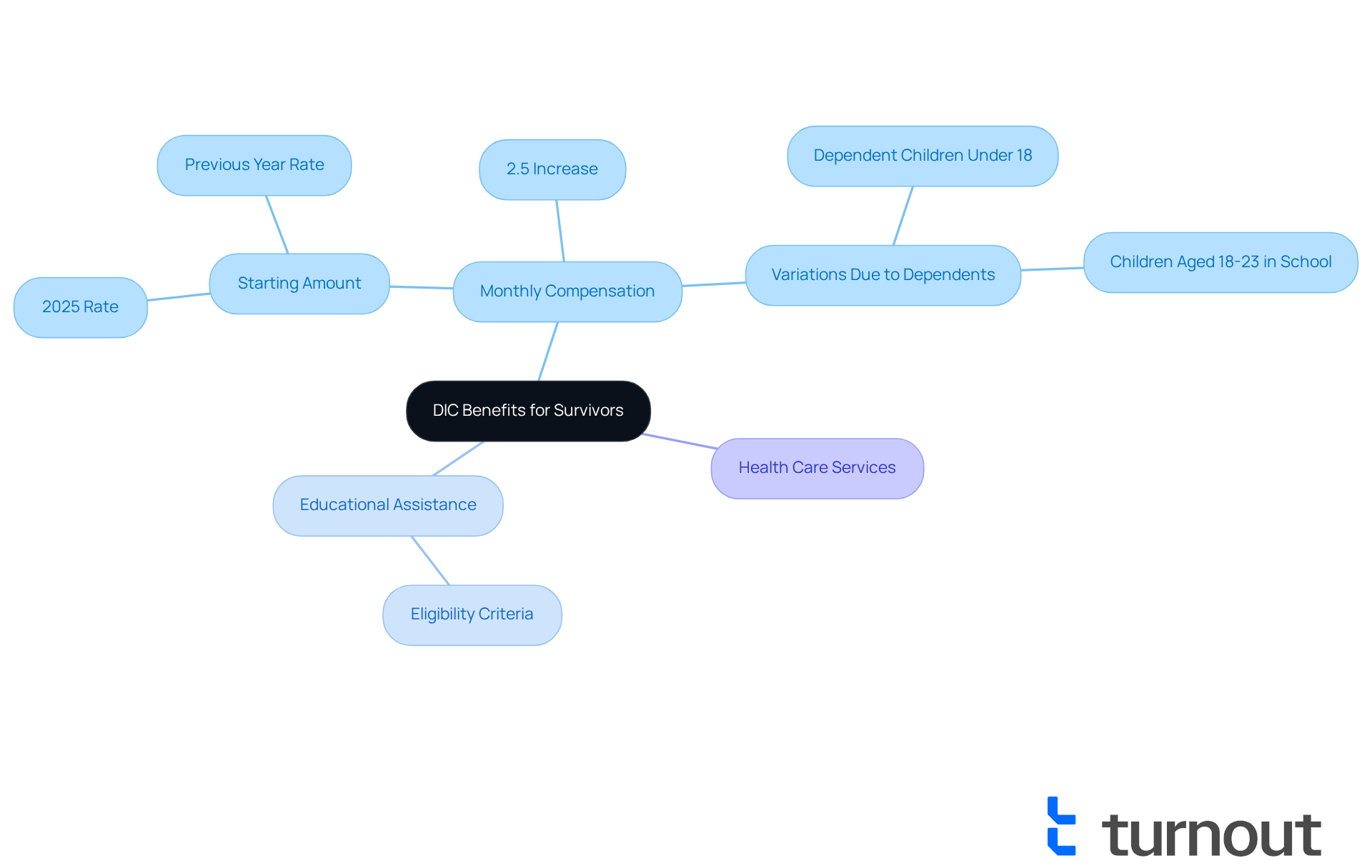
Steps to Apply for DIC Benefits
Applying for DIC benefits can feel overwhelming, but we're here to help you navigate this journey with care. By following these essential steps, you can enhance your chances of a smoother application experience:
- Gather Necessary Documentation: Begin by collecting vital documents such as the veteran's death certificate, marriage certificate, and any evidence of dependency. This foundational step is crucial for a successful application.
- Complete VA Form 21-534EZ: This form is specifically designed for spouses and children applying for DIC. Ensure all sections are filled out accurately to avoid delays.
- Submit the Application: You can submit your application online through the VA's eBenefits portal or by mail. Choose the method that best suits your needs, but remember, online submissions often expedite the process.
- Monitor Application Status: Utilize Turnout's platform to track your application status and receive updates on any additional requirements. Staying informed can help you respond promptly to any requests from the VA.
Following these steps can significantly increase your likelihood of success. Statistics show that timely and comprehensive submissions result in higher approval rates. Many individuals who sent in their applications with all required documentation reported a success rate exceeding 80% in obtaining assistance within the anticipated period of 3 to 6 months.
Successful application stories highlight the importance of preparation and persistence. Many have shared that collaborating with veterans' service organizations (VSOs) provided invaluable support and guidance throughout the application process. They ensured that applicants understood each step and had the necessary documentation ready. By adhering to these steps and seeking support from Turnout when needed, you can effectively manage the DIC benefits application process.
It's also crucial to stay updated on changes to DIC eligibility, especially due to the PACT Act, which has broadened support for those affected by veterans exposed to hazardous materials. By being proactive and utilizing available resources, including Turnout's expert guidance, you can enhance your opportunities for obtaining the support you deserve. Remember, you are not alone in this journey.
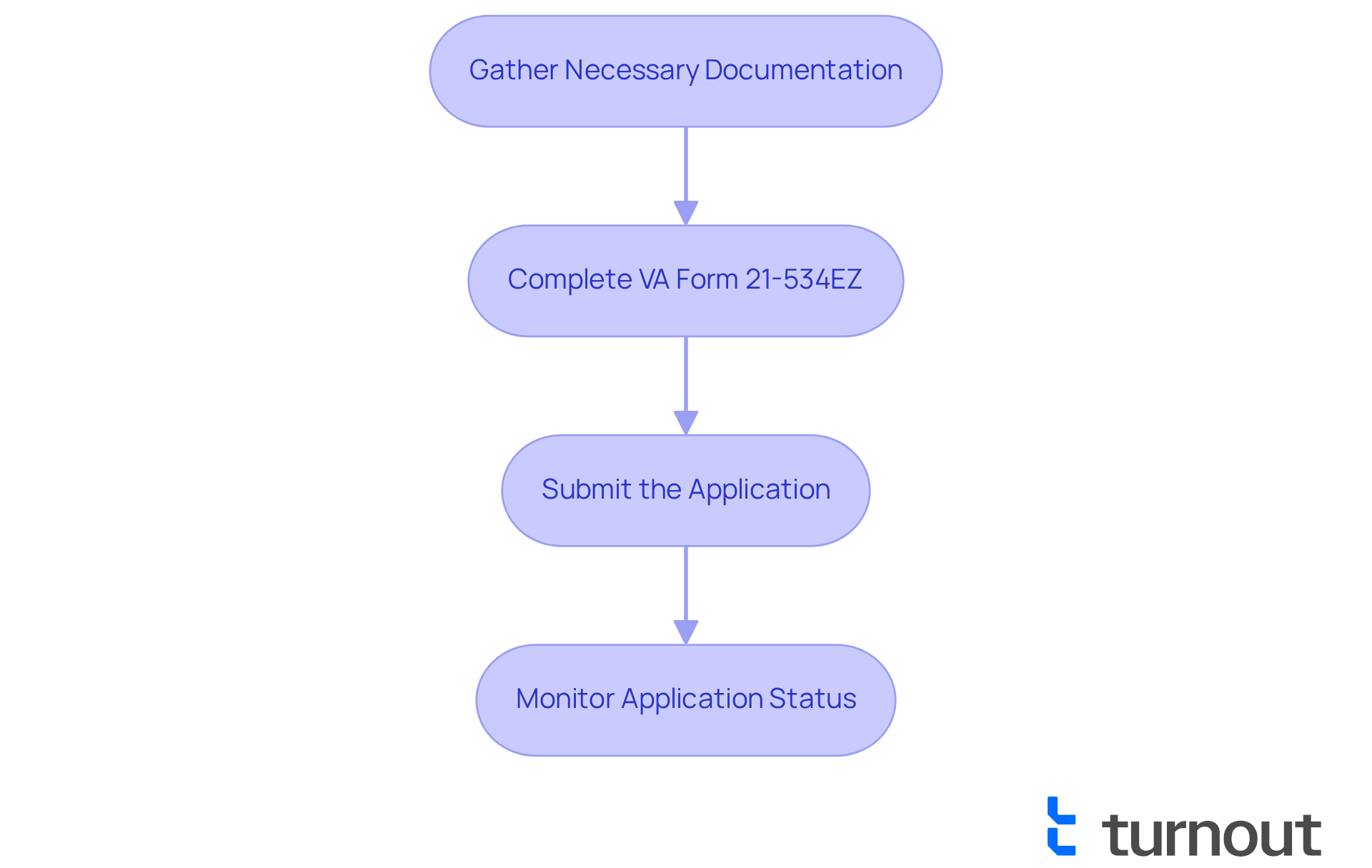
Impact of Dependents on DIC Benefit Amounts
The presence of dependents can significantly impact the amount of DIC benefits received by a recipient. We understand that navigating these complexities can be overwhelming. Generally, the more dependents an individual has, the higher the compensation amount. For instance, a surviving spouse may receive an additional $409.53 for each dependent child under age 18, contributing to the overall projected DIC compensation of $1,653.07 for 2025.
Furthermore, if the surviving spouse has children under 18, they can receive an extra $350.55 for the first two years following the veteran's death. This adjustment underscores the importance of understanding how dependents affect DIC benefits, especially for those with children or other dependents who rely on them for financial support. It's common to feel uncertain about DIC benefits, but acknowledging that DIC assistance is tax-free can further improve the financial aid accessible to those who remain.
By recognizing these factors, individuals can more effectively strategize their financial futures and ensure they receive the greatest advantages available. Remember, you're not alone in this journey. Turnout provides resources and services that can help survivors manage the intricacies of DIC entitlements, ensuring they comprehend their rights and how to apply for them efficiently. We’re here to help you every step of the way.
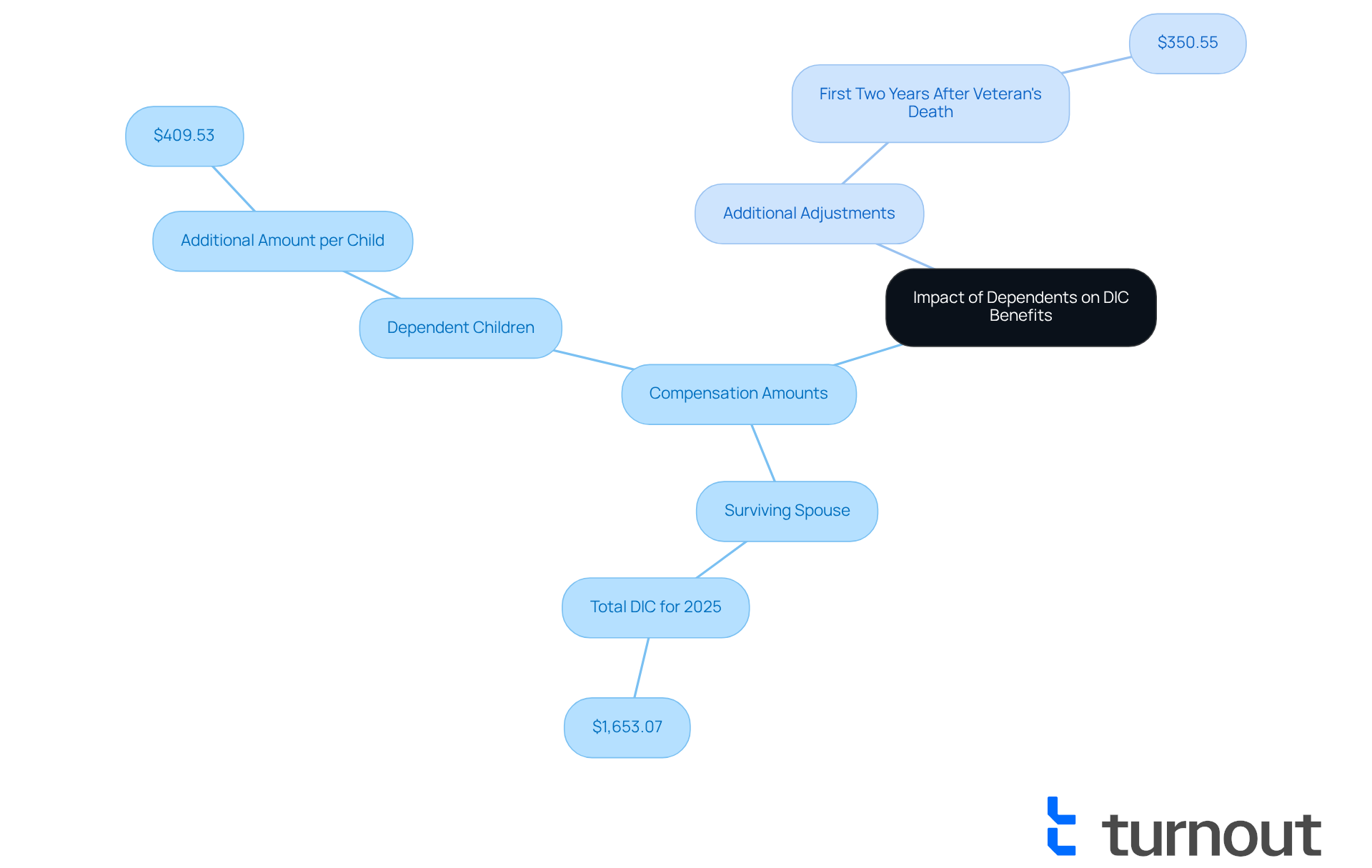
Understanding the PACT Act and Its Implications for DIC Claims
The PACT Act expands eligibility for DIC benefits by specifically addressing conditions linked to toxic exposure during military service. If you have experienced these challenges, know that there is now a clearer path to obtaining the assistance you deserve. We understand that navigating this process can feel overwhelming, but grasping the DIC benefits of this change is crucial for successfully maneuvering through the DIC process. Remember, you are not alone in this journey; we’re here to help.
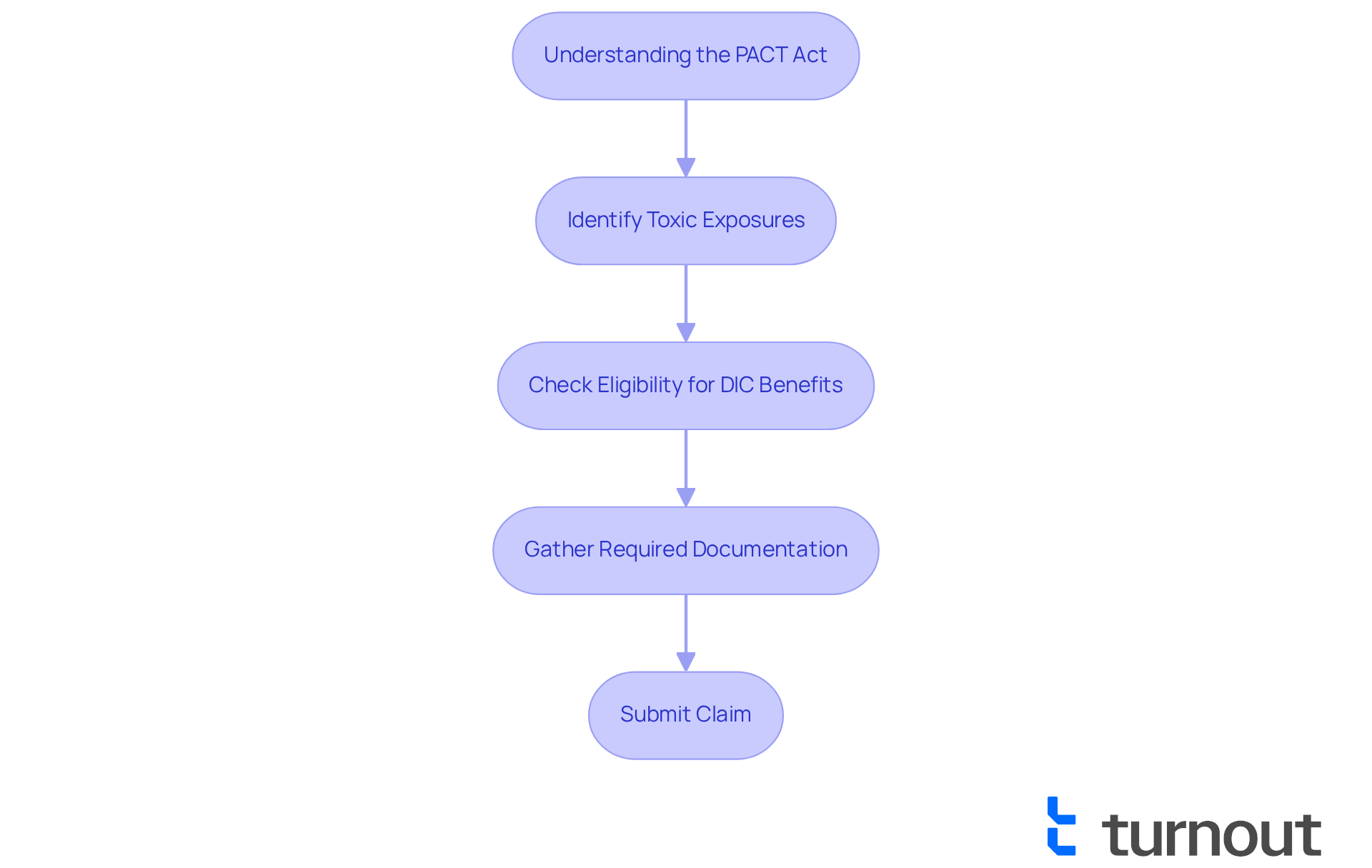
Common Mistakes to Avoid When Applying for DIC Benefits
When seeking DIC benefits, we recognize that dependents encounter numerous challenges. It's crucial to avoid typical mistakes that can jeopardize your requests. Unfortunately, a significant number of applications are rejected due to incomplete submissions—often stemming from missing documentation or missed deadlines.
It's common to feel overwhelmed, but veterans' service organizations emphasize the importance of following up on your application status. Neglecting this step can lead to unnecessary delays, complicating the process further. To enhance the likelihood of a successful application, we encourage you to meticulously review all requirements. Ensure that every piece of necessary information is included.
By being proactive and knowledgeable, you can navigate the process of DIC benefits more smoothly and effectively. Remember, you're not alone in this journey. Turnout provides expert assistance through trained nonlegal advocates who are here to help you. They can guide survivors through the complexities of their cases and offer essential resources to prevent common errors. Together, we can make this process easier for you.
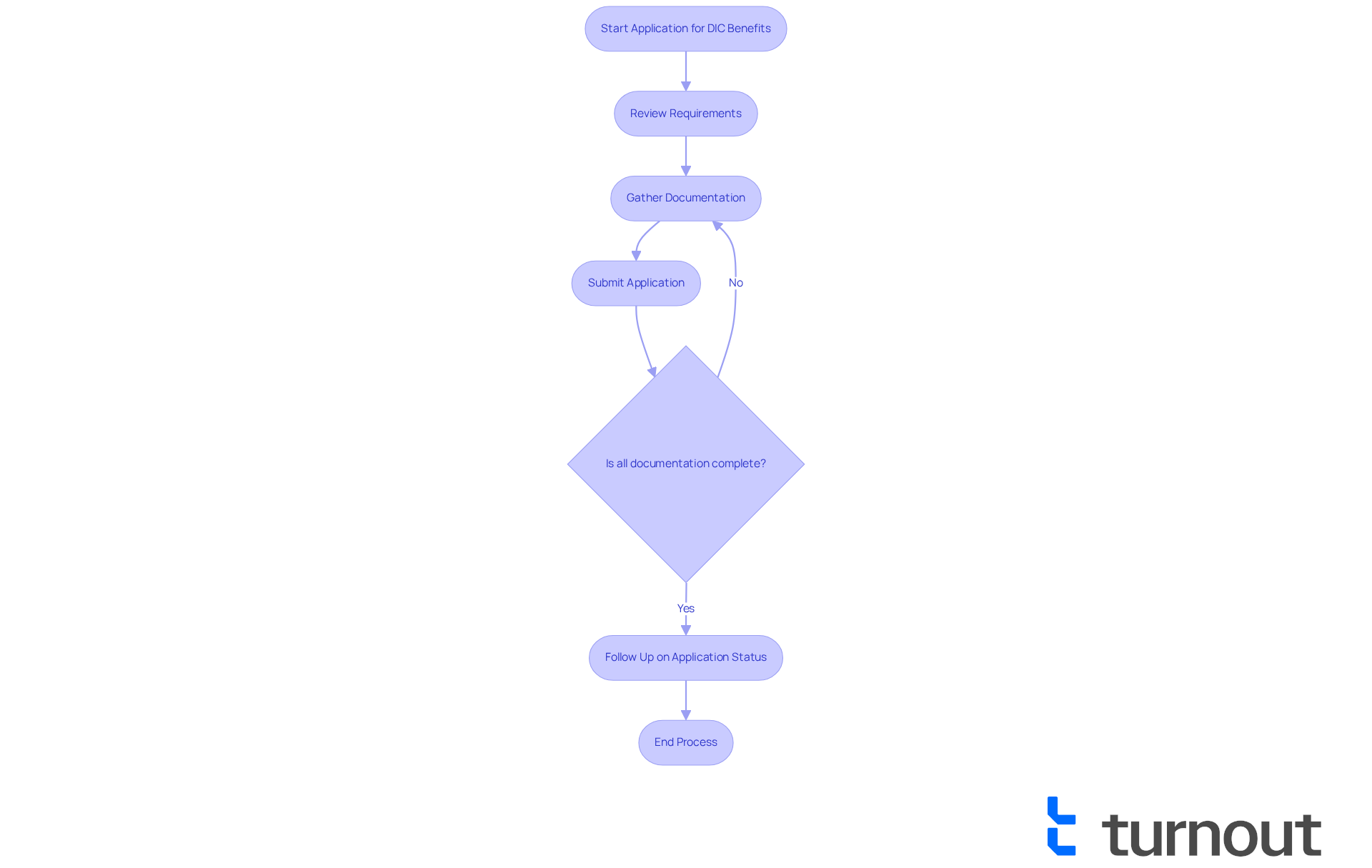
Additional Resources for DIC Benefit Claimants
Navigating the complexities of DIC requests can be overwhelming. We understand that you may feel uncertain about where to turn for help. Fortunately, there are various resources available to support you on this journey.
The VA's official website and local veterans' service organizations are excellent starting points. Additionally, Turnout is dedicated to streamlining access to DIC benefits and financial assistance from the government. They offer support through trained non-legal advocates who are here to help you every step of the way. Whether you need assistance with SSD applications or tax debt relief, Turnout provides the guidance you need.
These resources can offer you the extra support and information necessary to navigate the process efficiently. You deserve to receive the assistance you require without the complications of legal representation. Remember, you are not alone in this journey; we’re here to help.
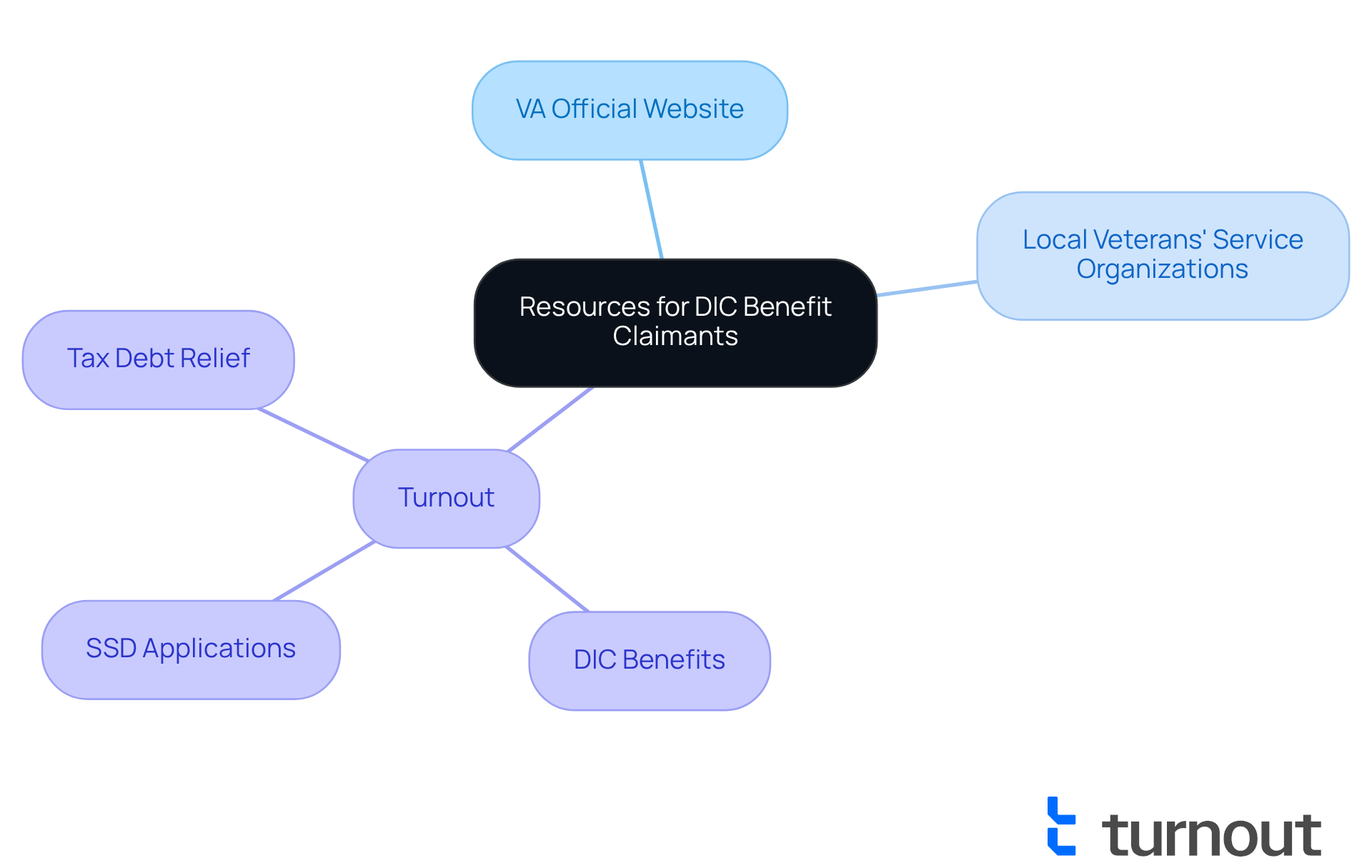
Follow-Up Actions After Submitting Your DIC Claim
After submitting a DIC request, we understand that you may feel uncertain about the next steps. It's important to take proactive follow-up actions to stay informed. Regularly checking the status of your application through Turnout's platform can simplify your access to DIC benefits.
Responding promptly to any requests for additional information from the VA is crucial. Keeping records of all communications can help you stay organized during this process. Remember, Turnout is not a law firm and does not provide legal advice. However, trained nonlawyer advocates and IRS-licensed enrolled agents are here to support you.
Staying engaged in the process can make a significant difference. By being proactive, you can help ensure that your claims are processed efficiently and effectively. You are not alone in this journey; we’re here to help.
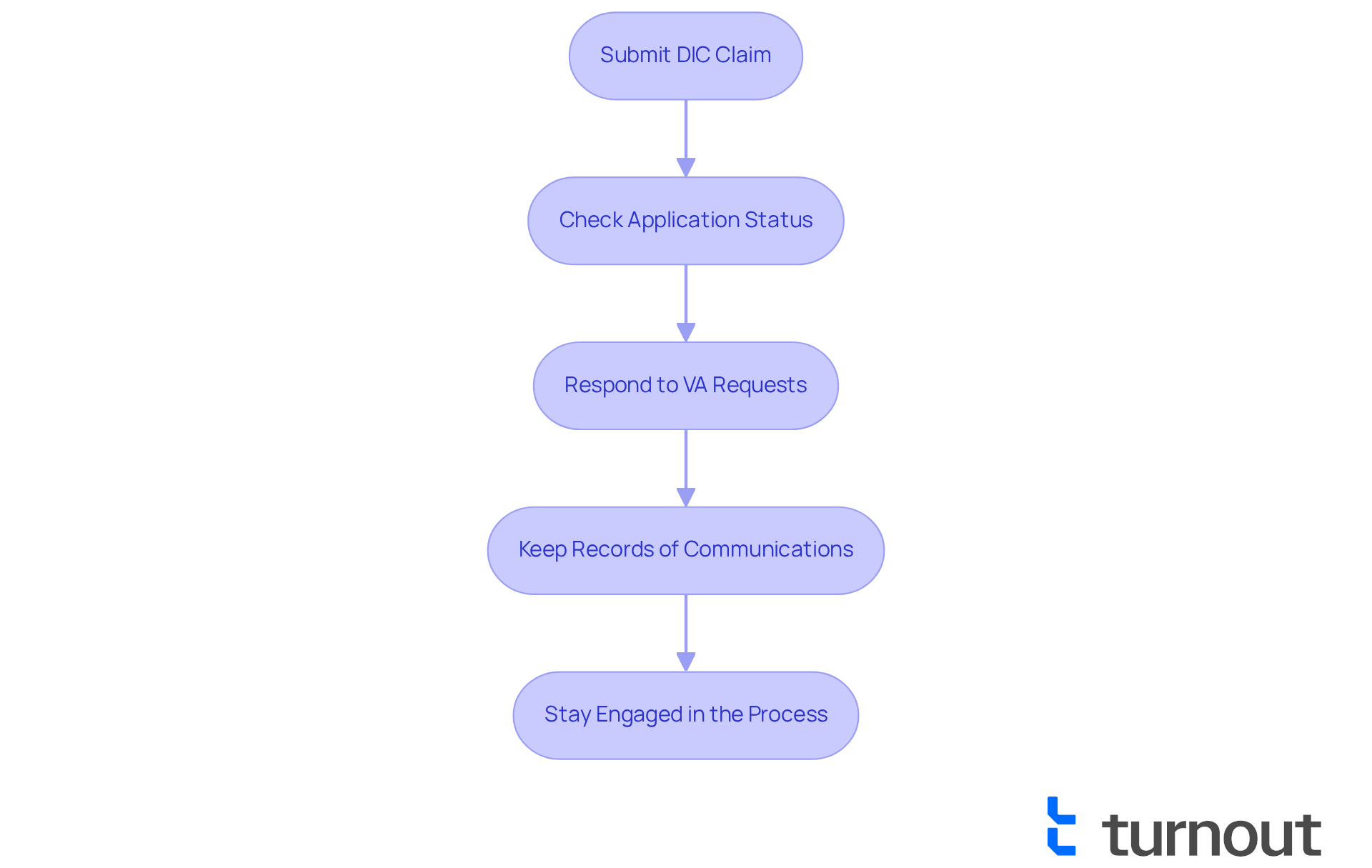
Conclusion
Navigating the complexities of Dependency Indemnity Compensation (DIC) benefits can feel overwhelming for survivors of veterans. We understand that the application process, eligibility requirements, and available resources can be daunting. It’s crucial to grasp these essential elements to successfully obtain the benefits you deserve. Utilizing technology and expert guidance can significantly streamline applications, allowing survivors to access the support they need without unnecessary stress.
Key insights to consider include:
- The importance of thorough documentation
- The impact of dependents on benefit amounts
- The implications of recent legislative changes like the PACT Act
By being well-informed about the necessary steps and common pitfalls, you can greatly improve your chances of a successful claim. Remember, you are not alone in this journey; organizations like Turnout are here to offer valuable assistance every step of the way.
Ultimately, pursuing DIC benefits is more than just navigating a bureaucratic process; it’s about securing financial stability and support for families who have sacrificed so much. We encourage you to take proactive steps, seek guidance, and utilize available resources to ensure you receive the benefits you are entitled to. The journey may be challenging, but with the right tools and support, it can become a manageable path toward a more secure future.
Frequently Asked Questions
What is Turnout and how does it assist with DIC benefits applications?
Turnout is a service that streamlines the DIC benefits claims process using advanced AI technology. It simplifies the application journey, provides timely updates, and offers support through skilled non-legal advocates who help applicants navigate the complexities without needing legal representation.
What are the eligibility requirements for Dependency Indemnity Compensation (DIC)?
To qualify for DIC benefits, you must be the spouse, child, or parent of a service member who died in the line of duty or from a service-related injury or illness. Clear documentation of your relationship to the deceased and the service member's status at the time of death is essential.
What documentation is necessary for applying for DIC benefits?
Essential documents for DIC benefits include the service member's death certificate, proof of relationship (such as marriage or birth certificates), relevant military service records, and medical records supporting the claim of a service-related death.
How does technology impact the DIC benefits application process?
Technology, such as the Digital Compensation Claims Tool from the VA, has expedited processing times. Applications submitted with expert help average around 128.5 days, compared to 136 days for those submitted independently, reflecting the effectiveness of a streamlined process.
What challenges might applicants face when gathering documentation for DIC claims?
Applicants may encounter challenges with documentation, as mistakes can lead to delays and rejections. Recent evaluations show a 24% error rate in processing DIC requests, highlighting the importance of thorough preparation and complete documentation.
How does the VA aim to improve the processing times for DIC claims?
The VA is implementing automated systems to reduce processing times, targeting under 125 days for claims decisions. This shift towards a digital experience aims to enhance the navigation process for veterans and their families.
What should surviving spouses know about remarriage and DIC eligibility?
Surviving spouses should be aware that remarriage may affect their eligibility for DIC benefits. Understanding this nuance is crucial for anyone aiming to obtain these benefits.
How can applicants increase their chances of a successful DIC claim?
Applicants can enhance their chances of success by organizing all necessary documentation in advance and ensuring that they provide clear evidence of the service member's status and their relationship to the deceased.




